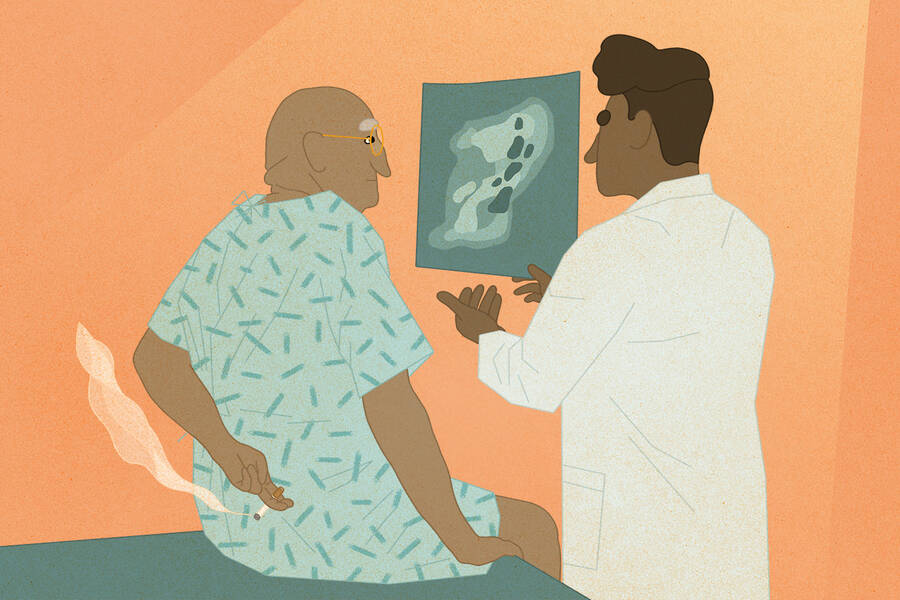Marketing May 3, 2022
The Psychological Factor That Helps Shape Our Moral Decision-Making
We all have a preferred motivation style. When that aligns with how we’re approaching a specific goal, it can impact how ethical we are in sticky situations.

Lisa Röper
When faced with a morally challenging situation, what helps you stick to your values?
You might remind yourself of how happy you are overall, so you don’t need to cut corners, or (in the case of financial temptation) how much money you have in savings, so there is no need to get more through questionable means. But according to two researchers at the Kellogg School, there’s another important consideration you probably wouldn’t imagine: a psychological phenomenon called “regulatory fit.”
Decades of research have identified two basic approaches to motivation: a promotion-focused style, which emphasizes aspiration and thinking about positive outcomes, and a prevention-focused style, which focuses on maintaining safety, fulfilling obligations, and avoiding problems. Most of us instinctively favor one or the other, but these inclinations aren’t set in stone and can be somewhat context-dependent.
We experience regulatory fit when the way we approach a goal matches our preferred style (imagine a promotion-focused person brainstorming ways to make everything go well) and nonfit when there’s a mismatch between tactics and style (imagine a promotion-focused person making a list of potential pitfalls).
Previous studies have shown that when people experience regulatory fit, things just feel more natural, and they become more engaged. In fact, regulatory fit enhances the persuasiveness of an appeal, increases how much people enjoy tasks, and makes them more willing to spend money. Experiencing fit also acts as an intensifier, making positive experiences feel especially good and negative ones especially bad.
Could it also affect our moral decision-making? Marketing professor Angela Lee, who has studied regulatory fit for years, thought so. So, she partnered with assistant professor of marketing Chethana Achar, whose research focuses on moral beliefs.
Achar suspected that experiencing regulatory fit would enhance people’s preexisting moral inclinations: people with a strong moral compass would be even more likely to make moral choices, and those with a flexible moral compass would be even more likely to make immoral choices. And, across several experiments, that’s exactly what she and Lee found.
“Regulatory fit makes people do what they think is right,” Achar says. “To one person, that might mean reporting your taxes accurately. To another person, not reporting your taxes might be the right thing, because they believe the government is cheating them out of money. Regulatory fit pushes people in the direction they are already going.”
Regulatory Fit and Moral Tendencies
To understand how regulatory fit might influence moral decision-making, the researchers first had to evoke the “just right” feeling of regulatory fit or the “something’s off” feeling of regulatory nonfit in study participants.
So, in one of the studies, they began by recruiting 493 online participants, who were randomly assigned to either the promotion-focused group (and asked to write about their aspirations) or the prevention-focused group (and asked to write about their obligations).
Next, to induce regulatory fit, the researchers had half of the promotion-focused group write about what they could proactively do to achieve their goals and half of the prevention-focused group write about pitfalls to avoid in fulfilling their obligations. To induce nonfit, the rest of the promotion-focused group wrote about pitfalls to avoid while pursuing their goals, and the remaining prevention-focused-group participants wrote about proactive strategies for fulfilling their obligations.
After all this, participants were asked to imagine themselves in a tempting situation that involved cheating on a long-term partner by having unprotected sex with an attractive acquaintance. Participants then rated how likely they would be to have sex in this situation.
To avoid influencing responses to the moral scenario, the researchers had collected information about moral beliefs in a separate session with the same group of participants, held several weeks earlier. Participants rated how much they agreed or disagreed with statements such as “Sometimes getting ahead of the curve is more important than adhering to rules” and “Cheating is appropriate behavior because no one gets hurt.”
These responses helped the researchers identify degrees of moral engagement, from “low disengagers”—people who viewed morality as binding and immorality as wrong—to “high disengagers”—those with a flexible moral compass, who would dissociate transgressive behaviors with morality at their convenience.
“Finding a phenomenon that shows up in all of these different ways of thinking about right and wrong—I think that’s quite exciting.”
— Chethana Achar
When they put all these elements—regulatory fit, moral disengagement, and moral decision-making—together, the researchers found an intriguing pattern. First of all, the morally flexible participants (i.e., the high disengagers) were in general more likely to cheat on their partner. Further, experiencing regulatory fit as compared with nonfit made them even more likely to have sex with the acquaintance, while those with a strong moral compass (i.e., the low disengagers) were even less likely to cheat. In other words, Lee says, “fit intensifies your predisposition—whatever you think is right, you’re more likely to do it.” Whether participants experienced a promotion fit or a prevention fit did not make any difference.
And the pattern wasn’t only confined to cheating on a romantic partner. When the researchers repeated the same experiment with different moral scenarios, the same results emerged. Regulatory fit shaped participants’ willingness to cheat on their taxes and how harshly they believed criminals should be punished. Even responses to a more abstract scenario involving a “tragedy of the commons” followed the same pattern, with fit influencing participants’ willingness to sacrifice for the common good in line with their underlying moral tendencies.
“Finding a phenomenon that shows up in all of these different ways of thinking about right and wrong—I think that’s quite exciting,” Achar says.
Lying for Gain, Telling the Truth at a Cost
But Achar and Lee weren’t content to study only hypothetical scenarios. For their final experiment, they studied moral decision-making in action, using an experiment devised by economist Uri Gneezy that involves either lying for financial gain or taking a loss by telling the truth.
First, they collected the same moral engagement scores used in the previous study from an initial group of 1,000 participants. After a few weeks, these participants were invited to participate in an ostensibly different study that was in fact the main experiment, and 601 returned.
After completing the regulatory-fit prompts from the previous study, participants were told they had been paired with another study participant, “Partner 2.” (In truth, there was no Partner 2.) Participants were then presented with two scenarios: in Option A, they would receive 25 cents and Partner 2 would receive 20 cents. In Option B, Partner 2 would receive 25 cents and they would get only 20. Participants were told Partner 2 would pick between Option A and Option B without knowing what either option actually entailed. But as Partner 1, participants could send Partner 2 a message about the options.
Then, participants picked one of two messages to send to Partner 2: either a financially advantageous lie, “Option A will earn Partner 2 more money than Option B,” or the disadvantageous truth, “Option B will earn Partner 2 more money than Option A.”
In the real world, as in the experiment, regulatory fit intensified participants’ moral leanings. When experiencing fit as compared with nonfit, the morally flexible people were more likely to lie to Partner 2, while those with strong moral values were less likely to lie.
Those who are moral and ethical “are even more honest under regulatory fit, at the cost of losing money,” Achar says. “So even when we incentivize these decisions, we see the same effect. I think that speaks to how strong this effect is.”
Regulatory Fit in the Real World
If regulatory fit makes the morally flexible more likely to lie, cheat, and steal, should we try to induce nonfit at every turn? (If you’re asking this question, you might have a prevention-focused mindset.) Probably not, says Lee. It’s worth remembering that most people are basically honest, and regulatory fit will help push them further in that direction.
In fact, she suggests, managers can even observe whether their employees are more promotion- or prevention-focused and help them adopt strategies that match their style. (Those who are more driven to achieve their hopes and aspirations than fulfill their duties and obligations tend to be promotion-focused; the opposite is true for the prevention-focused.)
“Understanding where people are coming from, and then giving them instructions that fit their orientation is going to get them to do what they think is the right thing.” And for most of us, that’s nothing to worry about.
Susie Allen is a freelance writer in Chicago.
Achar, Chethana, and Angela Y. Lee. 2022. “Regulatory Fit Intensifies Moral Predispositions.” Journal of Personality and Social Psychology.



